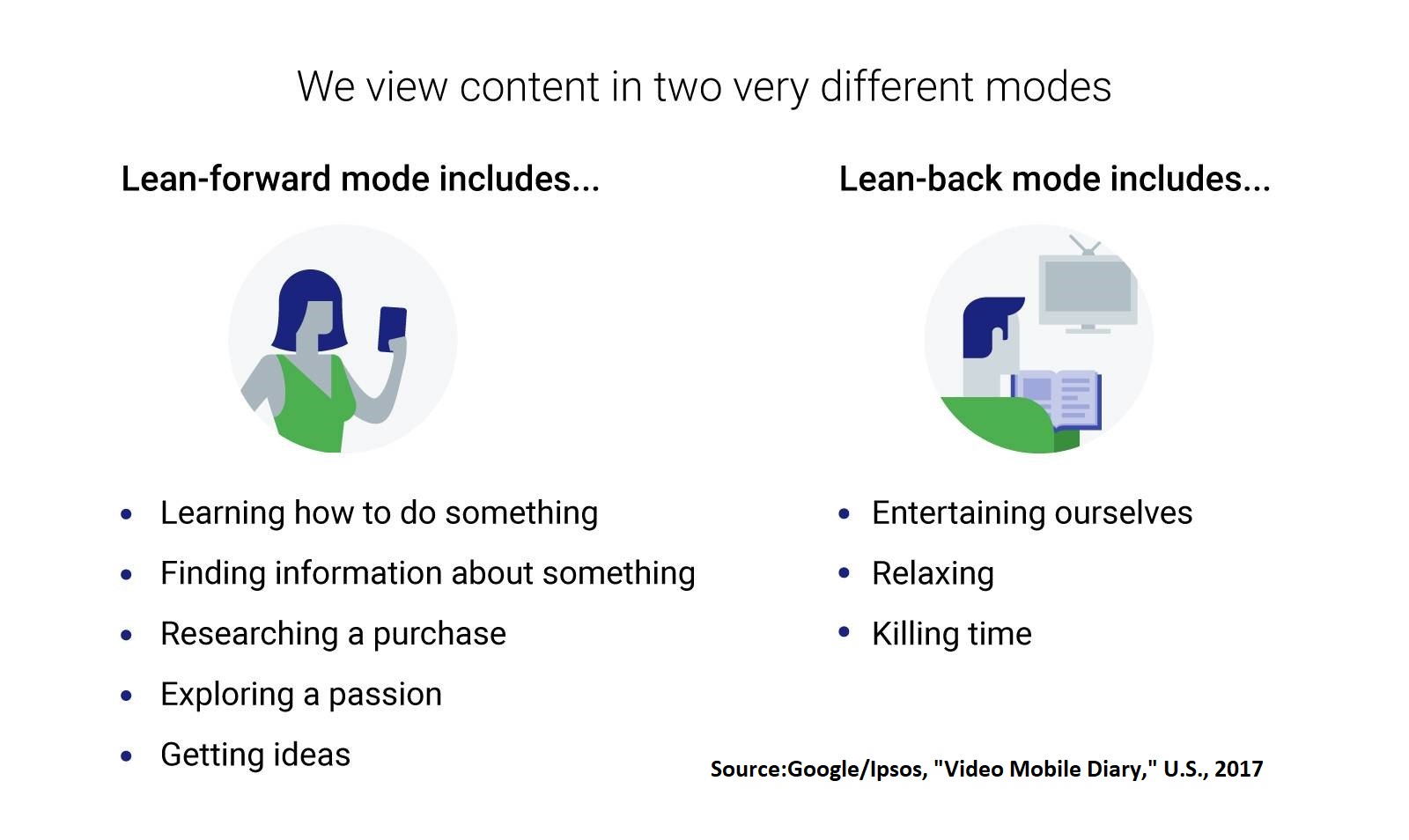Three Consumer Attention Myths Holding Back Marketers

Let me paint what I suspect will be a familiar picture. Your alarm goes off and the first thing you do is check texts, messaging apps, emails, feeds. You grab coffee, rush out and use your commute to catch up on news, or perhaps clips of last night's Trevor Noah highlights. Even at the office, you are constantly checking every device -- in between meetings, in line for lunch, again waiting for your turn at the coffee machine. You are toggling between no less than a dozen apps, all at once.
On your route home, you are busy sharing a hilarious video your spouse/partner just messaged you … and finally, you relax in front of the TV and get sucked into YouTube clips of The Late Late Show's latest Carpool Karaoke. If this sounds about right, your day is not unusual. It is not even bad. It's just our reality. It's the reality of having endless media options vying for our attention, with video playing a major role.
The consumer me thinks, "This is great. I can watch what I want, when I want, whenever I can squeeze it in!" While the marketer me thinks, "Wow, this is overwhelming."
At agencies, it is our job to help clients adapt to this new attention economy -- and I have noticed the same old myths holding back marketers from committing to change.
So, here's a reality check.
Myth No. 1: People have the attention span of goldfish
I regularly hear it said that attention spans have shrunk. In reality, people can and do still pay attention. New research shows 81% of video viewing sessions capture people's attention.[i]
If anything, we are paying more attention than ever before. What has changed, however, is our zero tolerance for timewasters.
Think about your own life. You no longer put up with something just because it is on. Ten years ago, you may have sat through a video you didn't find interesting. Now, you just "next" it, because you can.
On the other hand, when we're really interested, we invest. Hence, my marathon viewings of The Mindy Project and The Americans last weekend.
What does this mean for advertisers? It means attention is available, but the bar has been raised. If you really want someone's attention, you have to earn it.
Myth No. 2: People pay attention to all screens equally
Actually, not all screen time is equal. When you've got the TV on, how often do you find yourself fully focused on it? How does this compare to when you're watching videos on your phone?
The latest research supports what we intuitively know to be true: When people are in a "lean-forward" viewing mode versus a "lean-back" mode, they are 1.5 times as likely to pay attention. They are 1.8 times as likely to be in that mode when watching online video compared to TV.

For marketers, these lean-forward moments -- when we are less likely to be multitasking and more likely to be watching with purpose -- are the best opportunity to capture someone's attention.
Myth No. 3: Even if people pay attention to content, they've learned to tune out ads
Admit it: sometimes you pay attention to ads, and not only because you happen to be a marketer. If you are like me, certain ads seem to speak to you directly and you find yourself hooked. That's because when we find ads relevant, we can't help but pay attention. According to Ipsos, ads that are relevant to the viewer or feature people like them get 3 times the attention of the average ad.[ii]
How can marketers be relevant? By creating campaigns that add to someone's viewing experience rather than subtracting from it. That starts by understanding why consumers turn to particular platforms for content in the first place.
In talking to consumers, we found they seek out different online platforms to satisfy different emotional needs such as inspiration, excitement and connection. On its own, this isn't surprising. You don't go to YouTube, Facebook, Twitter and Snapchat for the same reasons, so why would your target audience?
What is surprising is how we frequently forget to think about the unique emotional role each platform plays and make small, simple edits to their content in response. By making this a practice, you can increase attention among your viewers. You can then go one step further by making your content on each platform as relevant to each viewer as possible. In the past, this kind of hyper-relevance was a pipedream. Today, new tools and data signals make mass personalization possible.
Take the example of Kellogg's, one of our clients, who was looking to promote its new write-on packaging for Rice Krispies Treats. For its online ad campaign, Kellogg's and creative agency Leo Burnett used YouTube's new Director Mix technology to make 110 versions of the same creative mapped against 175 keywords for a highly personalized, contextually relevant ad experience.
Someone browsing YouTube to find out how to baste a turkey might have seen this version of the six-second ad:
And someone watching a video about kid-friendly dinner recipes might have seen this one:
This has been one of Kellogg's most effective bumper campaigns to date, achieving strong ad recall and consideration among key demographics. Why did it perform so well? Because it took "capturing attention" to the next level, creating a magical brand connection and experience for viewers with technology powered relevance.
Marketing in the new attention economy
In breaking down these three myths, I hope I've painted a picture of opportunity for you. Because the fact is, it's more than possible to continue to win hearts and minds in today's world of "too many options, not enough time."
Discard the myths and remember these truths:
- People still pay attention, but with more content out there than ever before, the quality bar has been raised.
- You are most likely to capture people's attention through online video.
- Once you have captured their attention, hold onto it by making your brand relevant: to each platform, each person and each context.
[i] Google/Ipsos, Video Mobile Diary, US, 2017. (A session is defined as each instance of viewing a video(s) on same category/device and platform)
[ii] Google/Ipsos, Video Mobile Diary, US, 2017, n of 4,381 (saw ads occasions).
Click the social buttons above or below to share this story with your friends and colleagues.
The opinions and points of view expressed in this content are exclusively the views of the author and/or subject(s) and do not necessarily represent the views of MediaVillage.com/MyersBizNet, Inc. management or associated writers.


